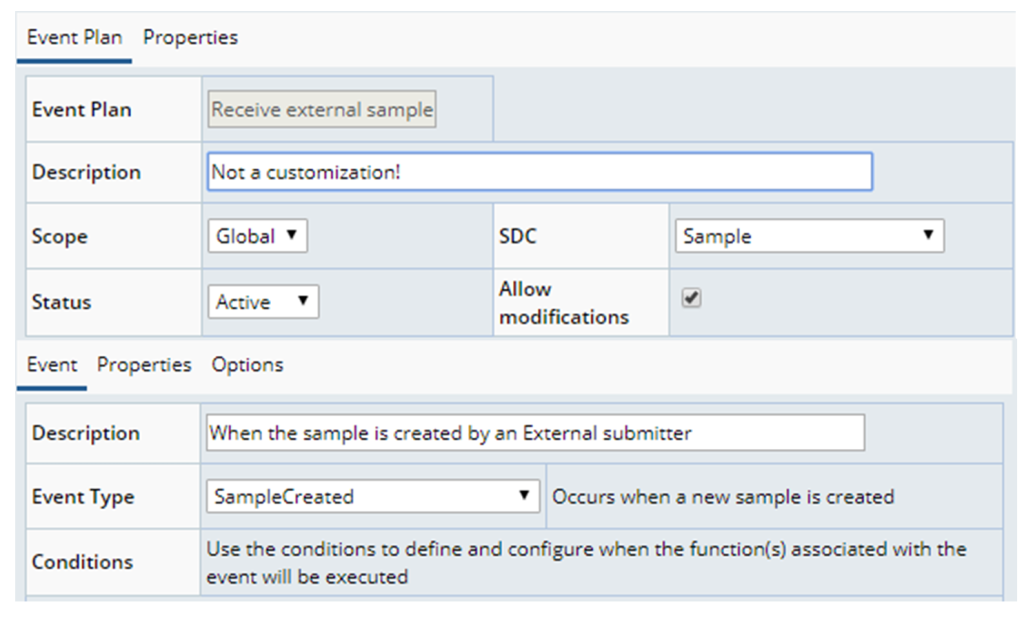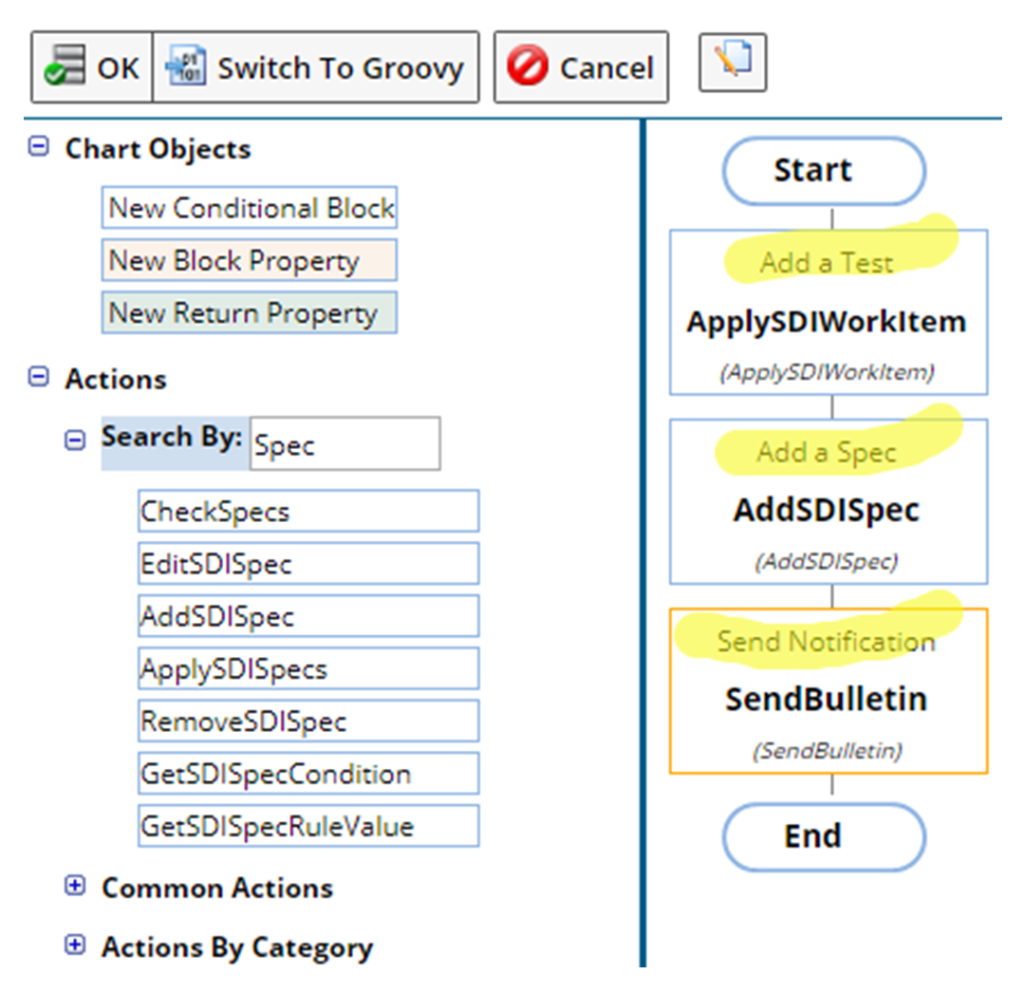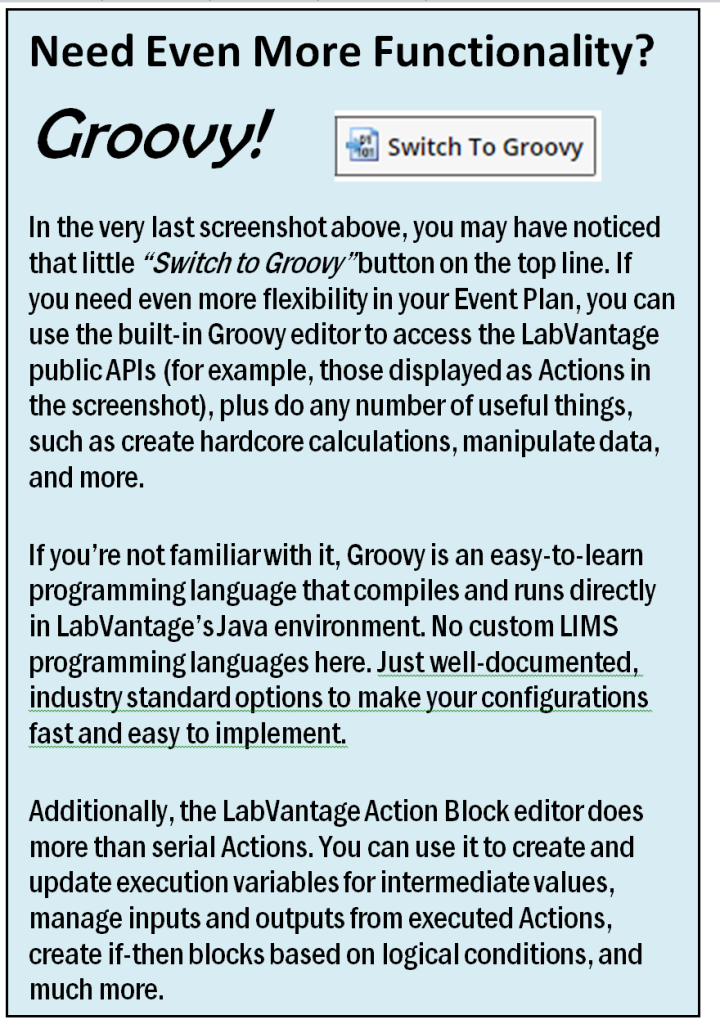In our earlier post (Is Your LIMS Sustainable? Why Configuration is the Way to Go – Part 1), we outlined the many ways that customizing a LIMS system can be problematic – from the overall cost of making modifications, and broken functionality of customizations after software upgrades, to becoming unmanageable over time as the knowledge resources you depend on change jobs or retire.
We asked, “How is LabVantage different?”, and presented one of the ways in which a LabVantage system remains upgradable and sustainable. (Read the first post in the series here.)
Now let’s look at another.
Deep Configuration
Every now and then, a lab truly requires deep changes to a LIMS function, and it’s simply unavoidable. Let’s use sample creation as an example. For instance, during sample creation let’s say you want to determine if the sample comes from an external source. If it does, you want to add a certain Test Method, apply a certain specification, and notify a bunch of people.
You might think, “That’s a lot of customization!”
Not so fast.
In LabVantage, this can all be implemented through pure configuration using Event Plans – a LabVantage feature used to execute business rules on LIMS Events. This feature works like this:
· When an [ Event ] occurs under these [ Event Conditions ], perform these [ Event Functions ].
To show you just how this is done, let’s walk through an Event Plan together using the above scenario.
First, you choose the type of event you want to use as the trigger. In this case it would be Sample Created. However, LabVantage offers many additional options. Here are a few of the sample-based events that can be used as an Event Plan trigger:
o Sample Created
o Sample Status Changed
o Sample Value Changed
o Test Created
o Test Value Changed, etc.
Notice that these are all sample-based events. If we chose batch-based events, our list of available triggers would change. Here are a few examples:
o Batch Created
o Batch Status Changed
o Workflow Completed, etc.
Now back to our walkthrough.
So far, our Event Plan looks like this:

Second, we’ll add a Filter to the Event, requiring the Submitter to be External. Again, this is very easy: simply press the Add Filter Condition button and enter your values.


Filters are very powerful, and allow data from the record to be filtered using standard conditions, equals, not equal, is blank, contains, and more.
Lastly, use the LabVantage Action Block Editor to drag and drop the additional event functions you want executed.
After identifying all the properties for the selected actions (for example, which test and specification to add, who to notify, etc.), you’re done. You’ve just created your first Event Plan and configured the LIMS functionality on sample creation to match the needs of your laboratory.
What started out sounding like a complex customization has been quickly and easily implemented using LabVantage Event Plans.
 But is it sustainable?
But is it sustainable?
In a word: absolutely!
Remember our earlier post where we discussed the nodes – or layers – of the LabVantage LIMS? Everything we created above is stored in the Customer Node – meaning that it will not be affected by system updates or software upgrades.
Want to learn more about what makes LabVantage LIMS stand out? Contact us today.



